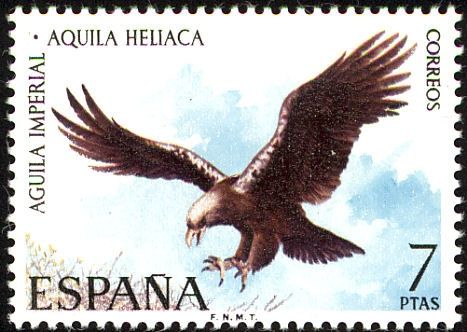Recognisable by its black plumage and striking red beak, the Black Stork (Ciconia nigra) is found in low numbers all over the planet. European populations migrate to Sub-Saharan Africa in the winter and during the summer an estimated 470 pairs can be found in Spain, a large proportion of which are found in the north of Extremadura. They are threatened.
Found in the mountains and forests of northwest Spain, the Cantabrian Capercaillie - Tetrao urogallus cantabricus - is a species of grouse that is threatened by a rapid decline in suitable habitats, illegal hunting and disease - its population is thought to have fallen to around 625.
Like the Iberian Lynx, the bearded vulture (Gypaetus barbatus) is an endangered species specific to the Iberian Peninsula. It’s a large bird of prey that feeds on the bones of dead animals, and around 200 are distributed among the peaks and caves of the Pyrenees. In addition to poaching and habitat loss, threats to the bearded vulture are compounded by the ingestion of poisons used in bait by hunters and electrocution as a result of power lines in the area.
The majestic Iberian imperial eagle (Aquila adalberti) has been made vulnerable by dwindling food sources, human interference and, like the bearded vulture, electrocution from power lines. The greatest number of the species can be found in Doñana National Park, where the Spanish NGO BirdLife has recorded an increase in successful reproduction, indicating a cautious optimism for the future of the great bird.
Source: The Local, June 6, 2018
https://www.thelocal.es/20180606/in-pics-these-are-spains-most-endanger…

- Login om te reageren
